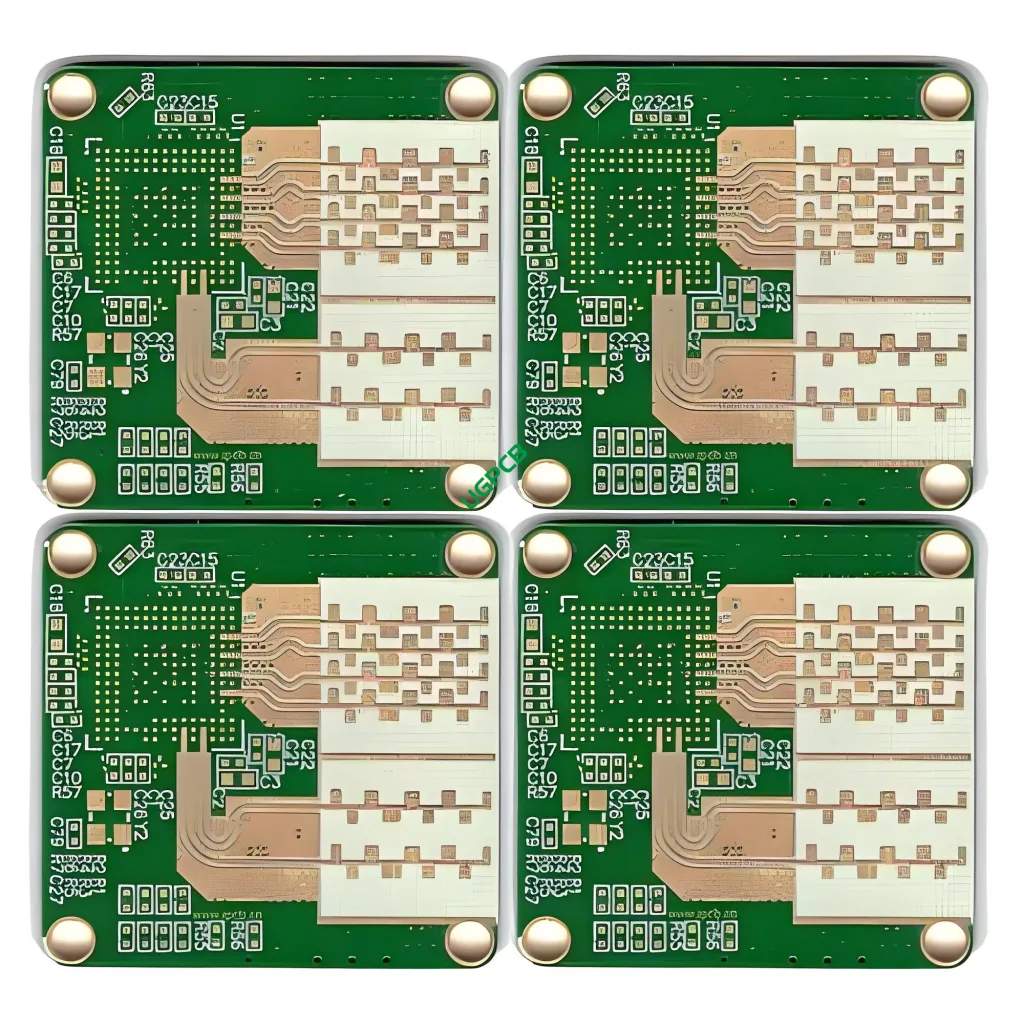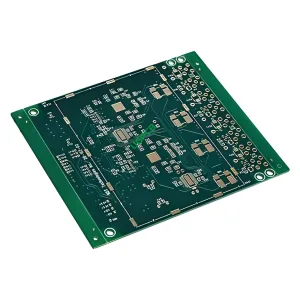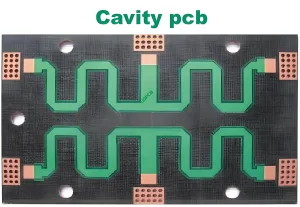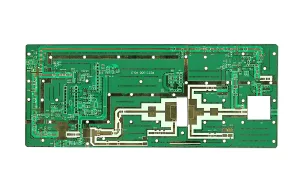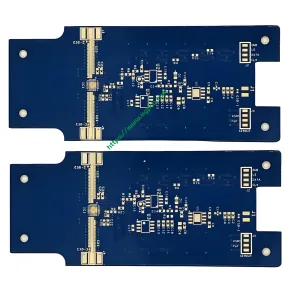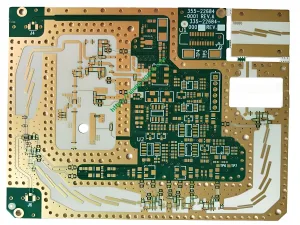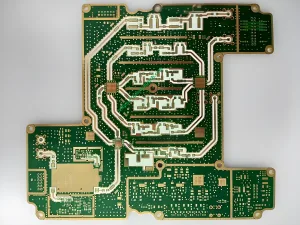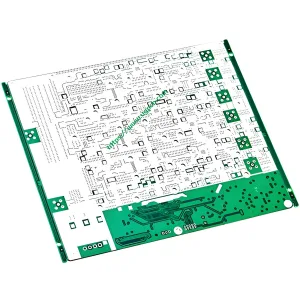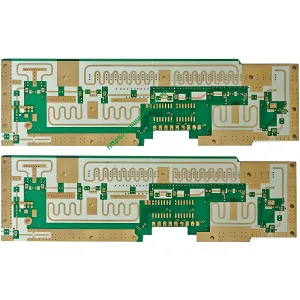Overview of High Frequency PCB
A high-frequency PCB is a specialized type of circuit board designed to operate at high frequencies, typically in the range of gigahertz (กิกะเฮิรตซ์). These PCBs are essential for applications that require precise signal transmission and minimal signal loss. They are widely used in industries such as telecommunications, radar systems, and satellite communications. The quality standard for high-frequency PCBs is IPC 6012 Class 2, ensuring high reliability and performance.
คำจำกัดความและข้อกำหนดที่สำคัญ
A high-frequency PCB is defined by its ability to handle signals at very high frequencies while maintaining signal integrity. ค่าคงที่ไดอิเล็กทริก (dk) of these PCBs ranges from 2.0 ถึง 1.6, which is crucial for controlling signal speed and impedance. The number of layers can vary from 1 ถึง 36, providing flexibility for different design requirements. The thickness of the PCB ranges from 0.254mm to 12mm, and the copper thickness can be either 0.5oz or 1oz. Surface technologies include Silver, ทอง, and OSP, each offering different benefits in terms of solderability and corrosion resistance. Special processes like mixed materials and stepped grooves further enhance the performance of high-frequency PCBs.
ข้อควรพิจารณาในการออกแบบ
When designing a high-frequency PCB, several factors must be considered:
- ค่าคงที่ไดอิเล็กตริก (dk): The dk value between 2.0 และ 1.6 is critical for maintaining signal integrity at high frequencies.
- Number of Layers: The wide range of layer options (1 ถึง 36) allows for customization based on specific application needs.
- ความหนา: The thickness range from 0.254mm to 12mm provides flexibility in design, catering to different spatial and functional requirements.
- ความหนาของทองแดง: The choice between 0.5oz and 1oz base copper affects the current-carrying capacity and signal integrity.
- Surface Technology: Options like Silver, ทอง, and OSP provide different levels of solderability and corrosion resistance.
- Special Processes: Techniques like mixed materials and stepped grooves can significantly enhance the performance of high-frequency PCBs.
หลักการทำงาน
High-frequency PCBs operate based on the principle of controlled impedance and minimal signal loss. The dielectric constant of the materials used ensures that signals travel with minimal delay and loss, maintaining their integrity. The precise control over thickness and copper weight allows for consistent impedance, which is critical for high-frequency signal transmission. Surface technologies like Silver, ทอง, and OSP provide reliable connection points for components, ensuring efficient signal transfer.
การใช้งาน
High-frequency PCBs are used in a variety of applications that require high-speed data transmission and signal integrity:
- Telecommunications: Ensuring clear and reliable signal transmission in mobile phones, base stations, and other communication devices.
- ระบบเรดาร์: Providing accurate and reliable signal processing in military and civilian radar systems.
- การสื่อสารผ่านดาวเทียม: Facilitating rapid and reliable data transfer between ground stations and satellites.
การจำแนกประเภท
High-frequency PCBs can be classified based on several criteria:
- Frequency Range: Typically operating at gigahertz (กิกะเฮิรตซ์) frequencies.
- Number of Layers: Ranging from 1 ถึง 36 ชั้น, depending on the complexity of the circuit.
- ความหนา: Options from 0.254mm to 12mm allow for customization based on specific application needs.
- ความหนาของทองแดง: Standard and heavy copper options (0.5oz and 1oz) cater to different current-carrying capacities.
- Surface Technology: Choices like Silver, ทอง, and OSP provide different levels of solderability and corrosion resistance.
คุณสมบัติของวัสดุ
The key properties of high-frequency PCB materials include:
- ค่าคงที่ไดอิเล็กตริกต่ำ: ทำให้มั่นใจได้ว่าการหน่วงเวลาและการสูญเสียของสัญญาณน้อยที่สุด, making them suitable for high-frequency applications.
- Wide Thickness Range: Allows for flexibility in design, catering to different spatial and functional requirements.
- Excellent Signal Integrity: Maintains signal integrity even at high frequencies, ensuring reliable performance.
- Reliable Connection Points: Surface technologies like Silver, ทอง, and OSP provide strong and reliable connection points for components.
กระบวนการผลิต
The production of a high-frequency PCB involves several steps:
- การเลือกวัสดุ: Choosing materials with a low dielectric constant and high signal fidelity.
- การออกแบบวงจร: Creating the circuit layout with considerations for high-frequency performance and signal integrity.
- การแกะสลัก: ลบทองแดงที่ไม่จำเป็นเพื่อสร้างรูปแบบวงจรที่ต้องการ.
- การเคลือบ: Bonding multiple layers together under high pressure and temperature to ensure a strong and reliable connection.
- การตกแต่งพื้นผิว: Applying surface technologies like Silver, ทอง, or OSP to enhance solderability and corrosion resistance.
- Special Processes: Utilizing techniques like mixed materials and stepped grooves to further enhance performance.
- การทดสอบและการควบคุมคุณภาพ: สร้างความมั่นใจว่าผลิตภัณฑ์ขั้นสุดท้ายเป็นไปตามข้อกำหนดและมาตรฐานทั้งหมด.
ใช้สถานการณ์
High-frequency PCBs are used in scenarios where high-speed data transmission and signal integrity are critical:
- Mobile Phones: Ensuring clear and reliable signal transmission in modern smartphones.
- Base Stations: Providing accurate and reliable signal processing in communication infrastructure.
- ระบบเรดาร์: Enabling precise and reliable signal processing in military and civilian radar applications.
- การสื่อสารผ่านดาวเทียม: Facilitating rapid and reliable data transfer between ground stations and satellites.
โดยสรุป, high-frequency PCBs are specialized circuit boards designed for high-speed data transmission and signal integrity. Their low dielectric constant, wide thickness range, and excellent signal fidelity make them ideal for applications in telecommunications, radar systems, and satellite communications.
 โลโก้ UGPCB
โลโก้ UGPCB

